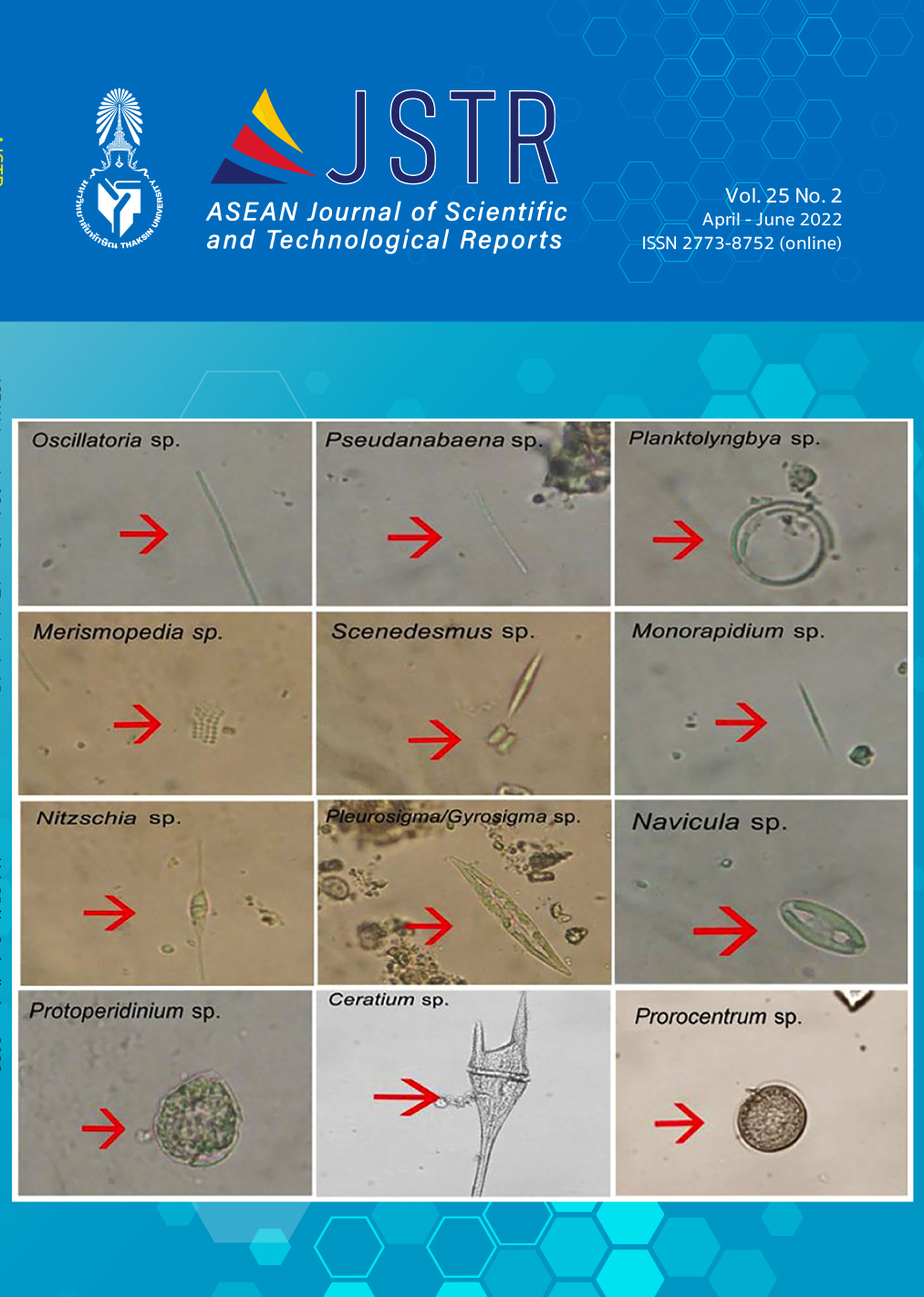The Impact on Properties of Block Rubber of Using Adulterated Coagulants in Cup Lumps of Natural Rubber
Main Article Content
Abstract
Cup lumps are raw materials used in block rubber production and commonly contain adulterants among the chemicals used for rubber coagulation. This study aimed to identify the composition and concentration of components in commercial coagulants for producing cup lumps in the Northeastern and Northern regions of Thailand. A further goal was to study the impact of using these cup lumps to make block rubber. Detection of coagulant concentration by ion chromatography found that 25% of the samples were composed of formate ions and 50% of the samples were composed of sulfate ions ranging from 17.89 to 93.46% and 36.17 to 97.74% by weight, respectively. Among the adulterated coagulants, they were mixed with formate ions and chloride ions in 18.75% of the samples and sulfate ions mixed with chloride ions in 6.25% of the samples. Additionally, block rubber containing adulterants had Po, PRI, and Mooney viscosity values that meet the lower grade STR 20 standard. Block rubber made from cup lumps coagulated using formic acid showed physical properties that met the STR 5 standard.
Article Details

This work is licensed under a Creative Commons Attribution-NonCommercial-NoDerivatives 4.0 International License.
References
Rubber Authority of Thailand. Report on Thai rubber statistics and forecasts for April 2021. Department of Rubber Economy, Bangkok, 2021; pp. 1-5.
Tassanakul, P. Production of cup crumbs for transformation into block rubber. Southern Border Agriculture Journal, 2008; 1(3), 2-5.
Tassanakul, P. A manual for producing good quality cup lumps. In guidance for rubber farmers. Rubber Technology Research and Development Division, Rubber Authority of Thailand, Bangkok, 2013; pp. 1-11.
Kamarulzaman, N.H. Sensorial characteristics of odour active compounds from raw natural rubber, Doctor of Philosophy, The University of New South Wales, USA, 2018.
Changsiriporn, J.; Kaewpradit, P.; Pongyela, P. Solving the odour problem of the block rubber factory STR 20 by using natural organic substances, In the full research report, Prince of Songkla University, Songkla, 2015; pp. 1-65.
Tassanakul, P. Factors used for quality control of block rubber made from dry rubber. Rubber Journal, 2014; 35(2), 15-25.
Rubber Authority of Thailand. Good Agricultural Practices (GAP) for rubber plantations; New Ordinary Printing (Thailand) Co., Ltd., Bangkok, 2020; pp. 1-49.
TAS 5907-2018. Good manufacturing practices for crepe rubber production.
RAOT 3-2021. Thin Brown Crepe Rubber - Premium grade: Specifications.
TAS 5908-2019. Good agricultural practices for rubber, Vol. (1) Production of fresh latex.
TAS 5910-2020. Good agricultural practices for rubber, Vol. (2), Production of cup lump.
Kunasakdakul, K. Plant Pathology Techniques, Chiang Mai University, Chiang Mai, 2013; p. 105.
ISO 2480:1972. Sodium chloride for industrial use — Determining sulphate content — Barium sulphate gravimetric method.
ISO 2479:1972. Sodium chloride for industrial use — Determining matter insoluble in water or acid and preparing principal solutions for other determinations.
Rubber Division. Testing for Thai Rubber (STR), Department of Agriculture, Bangkok, 2018.
Tassanakul, P. The calamity of calcium salt in the production of cup crumb. Rubber Journal, 2012; 33(2), 23-27.
Srihamongkul, N.; Kasikanan, S. Comparison of the efficiency of substrates used in the production of cup lumps affecting their yield and quality. Kasetsart Journal, 2015; 34, special issue 1, 629-634.
Pimrat, P.; Poonsawat, W.; Sahagaro, K. The effect of using formic acid and sulfuric acid at four concentrations as rubber coagulation agents on the STR 20 properties of rubber and mechanical properties of tires. Rubber Journal, 2021; 42(2), 11-23.
Tassanakul, P. Stop using sulfuric acid to coagulate latex. Rubber Journal, 2015; 36(4), 26-30.
Siriwanarangsan, S.; Butphaeng, U. Health hazards for accumulation of cup lumps. Environmental Health Journal, 2015; 18(1), 60-80.
Yunyongwattanakorn, J.; Tanaka, Y.; Kawahara, S.; Klinklai, W. Study the effect of proteins and fatty acids on storage hardening and gel formation under various conditions during accelerated storage of various kinds of natural rubber. Rubber Chemistry Technology Journal, 2003; 76, 1228-1240.
Xu Chen.; Hui-Feng Zhang.; Lu Zhang.; Yan-Chan Wei.; Benxiang Hu.; Ming-Chao Luo.; Shuangquan Liao. Insight on natural rubber's relationship with coagulation methods and some of its properties during storage. Journal of Rubber Research, 2021; 24, 555–562. doi: 10.1007/s42464-021-00139-y


